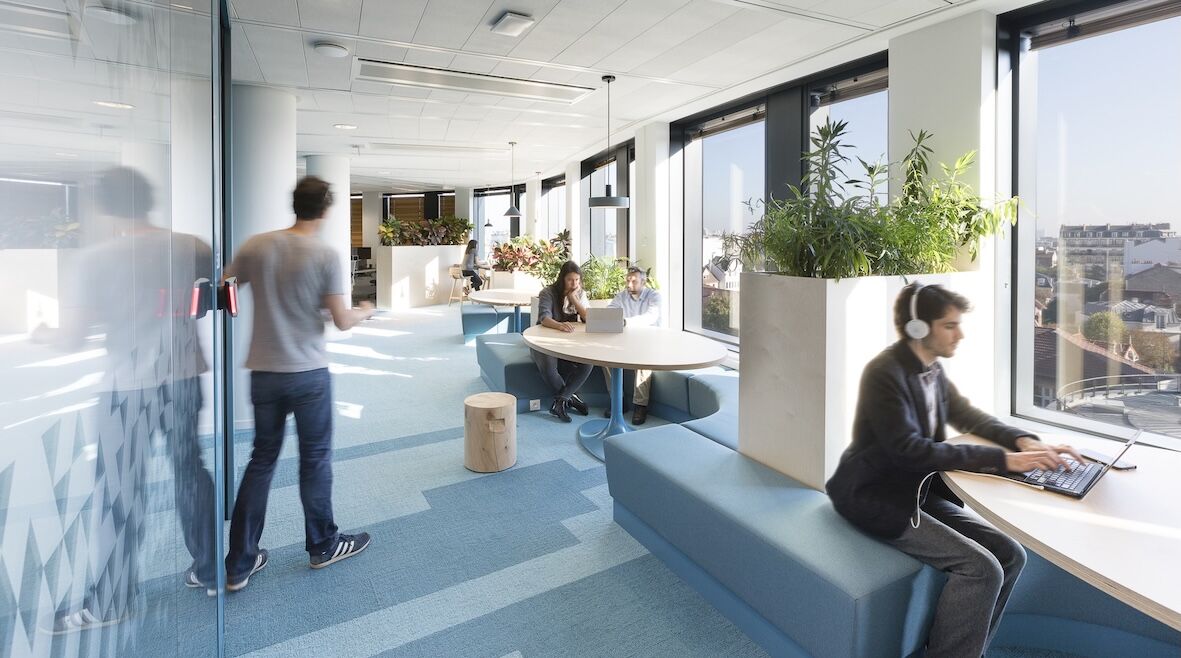Daytime design
Conventions inherited from bygone eras, when the hierarchy between noble and servant spaces was paramount, continue to influence the architectural design of office interiors, albeit unconsciously. Quite naturally, meeting rooms are called for on the first day, and social spaces on the second... It's not so long ago that RIEs occupied basements. But when the meeting room's windows open out onto an environment as prestigious as it may be, don't some participants tend to lose focus? And when a video or video-projection session is due to start, it takes 5 minutes to go dark... if you've found the remote control for the electric blinds. By contrast, the circulation area, where people spontaneously swap mugs, is condemned to artificial lighting. For many years now, Chambers architects has chosen - even if it remains counter-intuitive for some - the inversion of values around the sole notion of use: the light of the first day and the transfer to the facade of everyday functions, the 3 Cs - circulation, collaboration, conviviality. Penumbra or second-day light for more occasional uses or those requiring controlled environments: meetings, concentration, telephone or videoconferencing exchanges...
Sage headquarters. Chambers architects
Photographer: @Alexis Paoli





